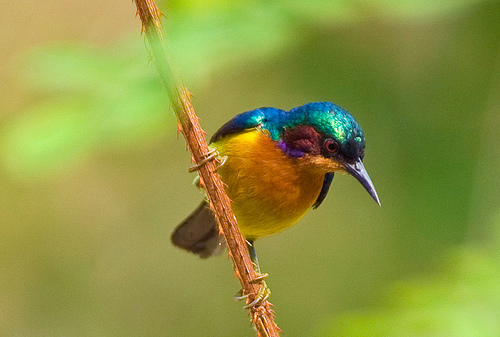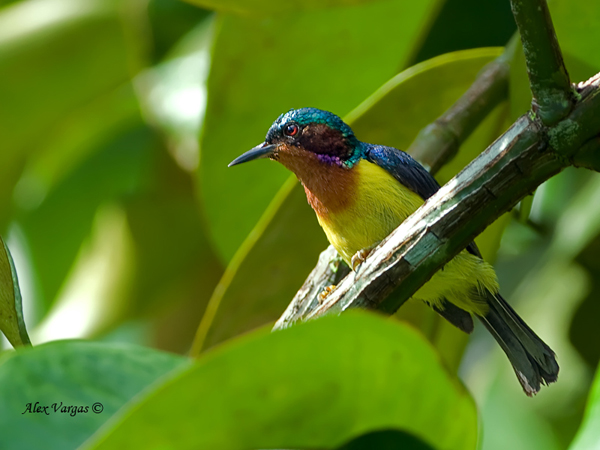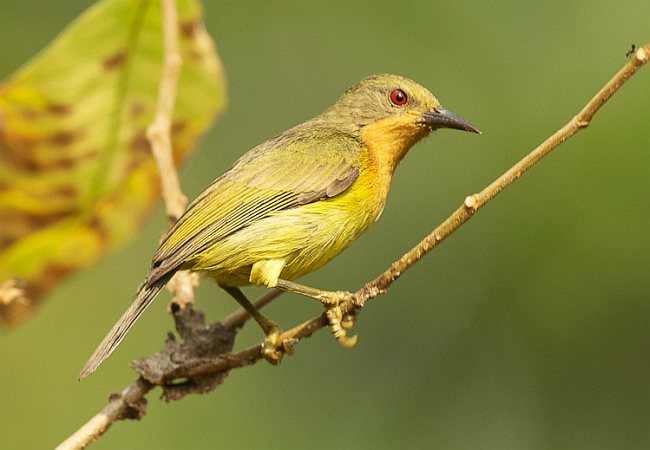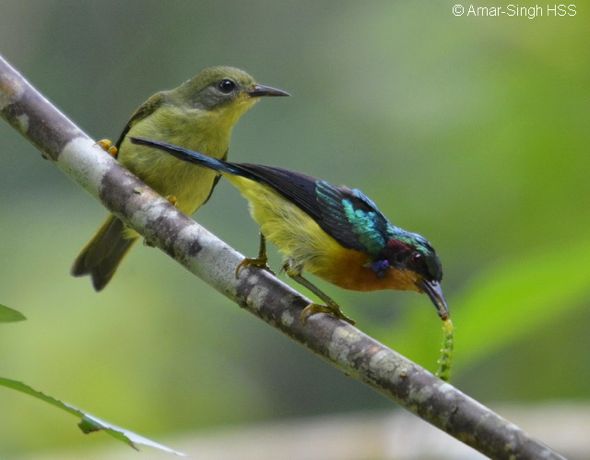
Chalcoparia singalensis
SUBFAMILY
Nectariniinae
TAXONOMY
Motacilla singalensis Gmelin, 1788, Malacca. Eleven subspecies.
OTHER COMMON NAMES
English: Rubycheek; French: Souimanga а joues rubis; German:
Rubinwangen-Nektarvogel; Spanish: Nectarina de Mejillas Rojas.
PHYSICAL CHARACTERISTICS
4.5 in (11.5 cm); 0.29–0.32 oz (8.2–9.1 g). Differs from all
other sunbirds by unique structure of its tongue, which is covered
in a horny plate with deeply-notched tip. Green upperparts
with orange throat and yellow breast and belly.
DISTRIBUTION
C. s. assamensis: East Nepal to Bangladesh, northern Myanmar,
northern Thailand, and western and southern Yunnan; C. s.
bantenensis: western Java; C. s. borneana: Borneo; C. s. internota:
southern Myanmar and southern Thailand; C. s. interposita:
southern Thailand; C. s. koratensis: eastern Thailand, Laos, and
Vietnam; C. s. pallida: north Natuna Islands; C. s. panopsia: islands
off west coast of Sumatra; C. s. phoenicotis: eastern and
central Java; C. s. singalensis: Malay Peninsula; C. s. sumatrana:
Sumatra and Belitung.
HABITAT
Forests, scrub, clearings, mangroves, coasts, and well-vegetated
riverbanks and gardens.
BEHAVIOR
Active, tit-like
BEHAVIOR
. Sometimes forages in small flocks.
FEEDING ECOLOGY AND DIET
Feeds on nectar, fruits, pollen, and insects, which it may take
from spider webs.
REPRODUCTIVE BIOLOGY
Male sings shrill song from perch on tall tree or low bush to
defend territory, jerking tail as it does so, and feeds female
during courtship. Lays two eggs in pear-shaped nest, January
through August.
CONSERVATION STATUS
Not threatened. Common in most of range but rare in Nepal
and Bhutan.
SIGNIFICANCE TO HUMANS
None known.
Other popular Animals
Photo Gallery of - Ruby-cheeked sunbird




 Animalia Life
Animalia Life